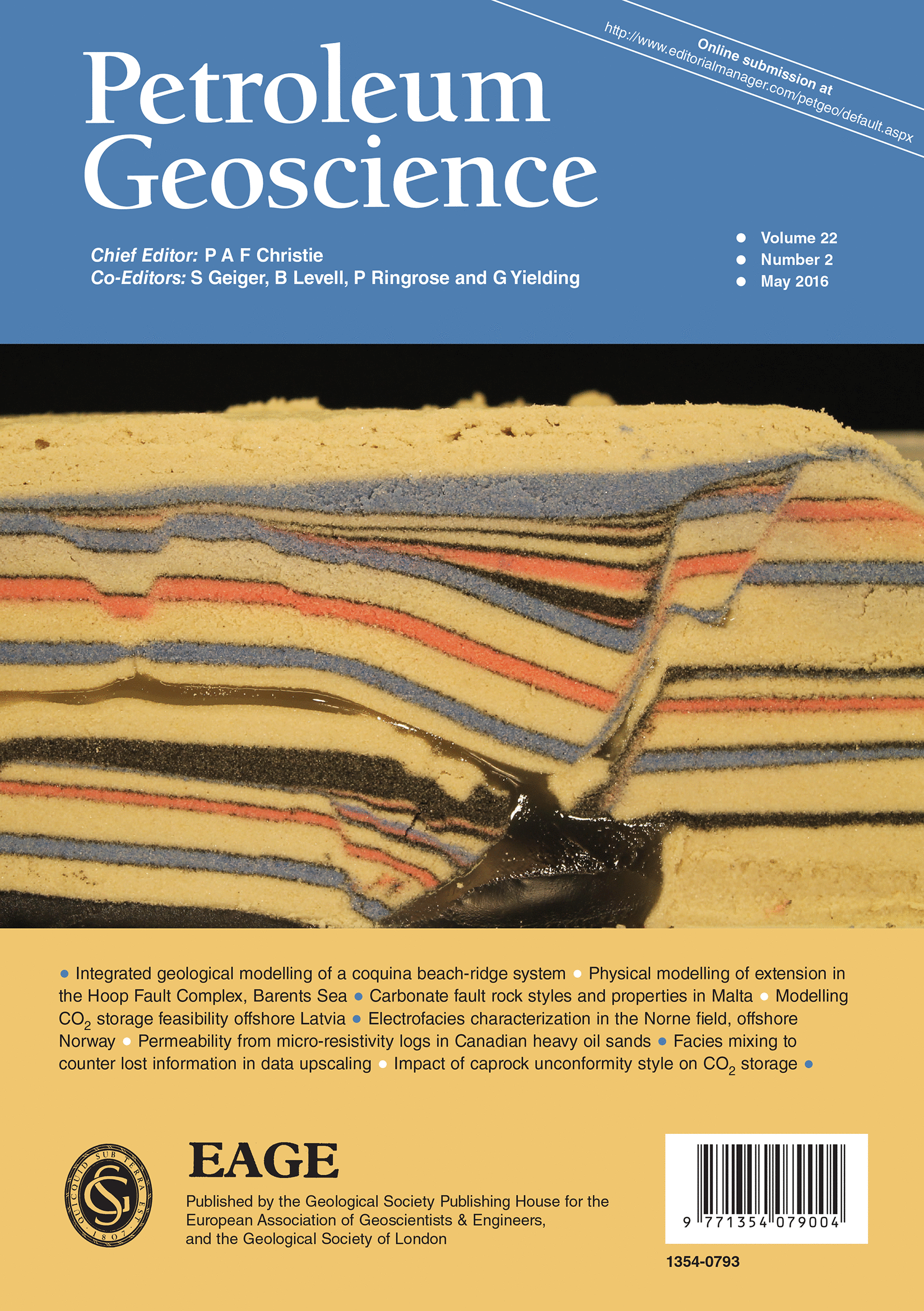
Full text loading...
Time-lapse numerical seismic modelling based on rock physics studies was for the first time applied to analyse the feasibility of CO2 storage monitoring in the largest Latvian offshore geological structure E6 in the Baltic Sea. The novelty of this approach was the coupling of the chemically induced petrophysical alteration effect of CO2-hosting rocks measured in laboratory with time-lapse numerical seismic modelling. Synthetic seismograms were computed for the E6 structure, where the sandstone reservoir of the Deimena Formation of Cambrian Series 3 (earlier Middle Cambrian) was saturated with different concentrations of CO2. The synthetic seismograms obtained after CO2 injection were compared with the baseline. The following four scenarios were considered: (1) a uniform model without the alteration effect; (2) a uniform model with the alteration effect; (3) a plume model without the alteration effect; and (4) a plume model with the alteration effect.
The presence of CO2 in the reservoir layers can be detected by direct comparison and interpretation of plane-wave synthetic seismic sections, and is clearly observed when one displays the difference between the baseline and post-CO2 injection synthetics. The normalized root-mean-square imaging techniques also clearly highlight the time-lapse differences between the baseline and post-injection seismic data.
The laboratory-conducted alteration of the petrophysical properties of the reservoir had a strong influence on the reflected signals in the seismic sections. The greatest difference was revealed on seismic sections with 1% CO2 saturation, increasing the detectability of the stored CO2. The difference decreased with an increase in CO2 content.
The saturation of CO2 could be qualitatively estimated up to a value of 5%. Higher saturation produced a strong signal in the repeatability metrics but the seismic velocity varied so slightly with the increasing gas content that the estimation was challenging. A time shift or push-down of the reflectors below the CO2 storage area was observed for all scenarios.
According to changes in the amplitude and two-way travel times in the presence of CO2, reflection seismics could detect CO2 injected into the deep aquifer formations even with low CO2 saturation values.
Our data showed the effectiveness of the implemented time-lapse rock physics and seismic methods in the monitoring of the CO2 plume evolution and migration in the E6 offshore oil-bearing structure. The new results obtained could be applied to other prospective structures in the Baltic region.

Article metrics loading...

Full text loading...
References


Data & Media loading...

